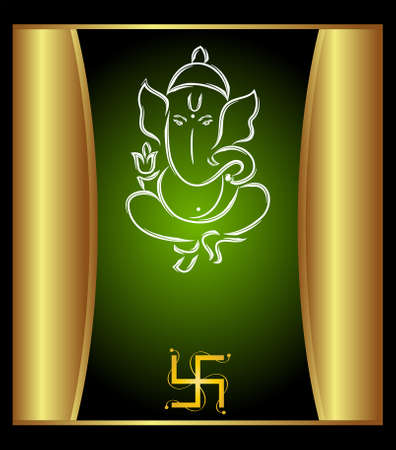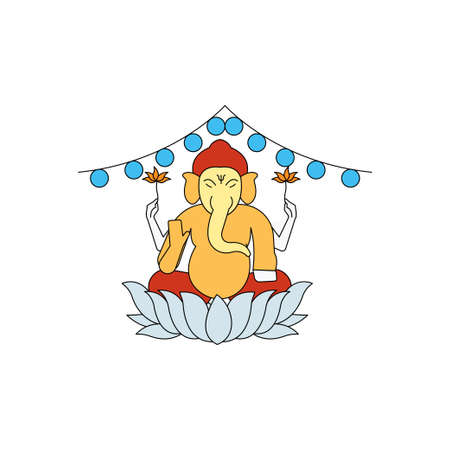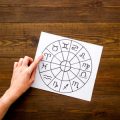Introduction to Rahu Ketu Grah Shanti Puja
In the intricate world of Vedic astrology, Rahu and Ketu are considered two of the most influential planetary nodes, often referred to as shadow planets. Unlike other planets in the Navagraha, Rahu and Ketu do not have a physical form but their impact on an individual’s life is profound, shaping destinies, relationships, and fortunes. The presence of these nodes in one’s horoscope is believed to bring about significant karmic influences, affecting both personal and family life. Many Indian households, regardless of region or language, hold deep-rooted beliefs regarding the effects of Rahu and Ketu doshas (afflictions), associating them with periods of unexpected challenges or obstacles in career, marriage, health, and overall peace. This is where the traditional Rahu Ketu Grah Shanti Puja gains immense significance. It is not just a religious ritual but a spiritual intervention aimed at pacifying these malefic influences and restoring harmony within the family. In Indian society, performing this puja has become a widespread practice, especially before important events like weddings or during phases of struggle. The puja reflects the collective hope for love, stability, and positive energy in homes—values that are cherished in Indian culture.
2. Traditional Rituals and Procedures
Rahu Ketu Grah Shanti Puja is a time-honoured ceremony in Indian culture, performed to neutralise the malefic effects of Rahu and Ketu—the shadow planets in Vedic astrology. The puja is meticulously carried out following traditional rituals, sacred mantras, and region-specific customs that reflect the diversity of India. Below is a step-by-step guide on how this puja is generally performed across the country.
Step-by-Step Procedure
- Puja Sthala Preparation: The ritual begins by purifying the area where the puja will be conducted, usually at home or in a temple. The altar (mandap) is decorated with fresh flowers, rangoli, and earthen lamps (diyas).
- Sankalpam: The devotee takes a vow (sankalp) with water and flowers in hand, stating the purpose of the puja—generally for peace, prosperity, and relief from planetary doshas.
- Kalash Sthapana: A copper pot (kalash) filled with holy water, mango leaves, and coconut is placed as an invocation to Lord Ganesha for removing obstacles.
- Invoking Rahu & Ketu: The idols or yantras of Rahu and Ketu are placed on the altar. Special offerings such as blue flowers for Rahu and durva grass for Ketu are made.
- Mantra Chanting: Vedic priests chant powerful mantras for both Rahu and Ketu. The most popular ones are “Om Bhram Bhreem Bhroum Sah Rahave Namah” for Rahu and “Om Shram Shreem Shroum Sah Ketave Namah” for Ketu.
- Offerings & Havan: Offerings (naivedya) like coconut, jaggery, black sesame seeds, bananas, and incense are presented. A fire ritual (havan) is performed while reciting specific shlokas.
- Aarti & Prasad Distribution: The puja concludes with aarti (devotional song) and distribution of prasad (blessed food) among participants.
Common Mantras Used
| Planet | Main Mantra |
|---|---|
| Rahu | Om Bhram Bhreem Bhroum Sah Rahave Namah |
| Ketu | Om Shram Shreem Shroum Sah Ketave Namah |
Popular Offerings During Puja
| Offering Item | Significance |
|---|---|
| Coconut & Jaggery | Pleasure of deities; removes negativity |
| Black Sesame Seeds | Pleasing Rahu; absorbs negative energy |
| Mango Leaves & Betel Nut | Purity; auspiciousness |
Regional Customs Across India
- North India: Devotees often visit temples like Trimbakeshwar Jyotirlinga in Maharashtra for elaborate rituals.
- South India: In Tamil Nadu and Karnataka, special abhishekam (ritual bathing) is performed with milk and turmeric.
- Bengal & East India: Black urad dal and blue cloth are commonly offered to appease Rahu.
- Western India: Fasting on Saturdays or during Rahu Kalam is observed along with chanting mantras.
The Rahu Ketu Grah Shanti Puja unites families in faith and hope. By observing these age-old rituals together, couples can enhance mutual understanding, strengthen their bond through shared spirituality, and invite harmony into their relationships—laying the foundation for lasting love blessed by celestial forces.

3. Cultural Beliefs and Symbolic Meanings
In Indian society, Rahu and Ketu are not just astronomical entities but carry deep-rooted cultural beliefs, superstitions, and symbolic meanings. People commonly perceive Rahu and Ketu as shadow planets that bring about sudden changes, mysteries, and transformative energies in personal and family life. Many families believe that the malefic influence of these grahas can result in misunderstandings between loved ones, obstacles in marriage alliances, or delays in starting a family. It is widely believed that when Rahu or Ketu are negatively placed in one’s horoscope, they can create disturbances such as mental unrest, financial instability, or recurring health issues within the household.
Popular Beliefs Shaping Daily Life
Across different regions of India, stories abound about how Rahu and Ketu influence destiny. For example, it is common for families to avoid major decisions like marriages or purchasing property during certain planetary periods known as Rahu Kalam or Ketu Kalam. Elders often narrate tales where unexpected separations or reconciliations in couples’ lives are attributed to the powerful effects of these celestial nodes. As a result, people are encouraged to perform specific rituals to appease these planets and restore peace within their homes.
Superstitions Embedded in Tradition
The aura around Rahu and Ketu has given rise to numerous superstitions—such as advising couples to wear gemstones like Gomed (Hessonite) for Rahu or Cat’s Eye for Ketu. Some families even keep symbolic items at home, like sacred threads or yantras blessed by priests, believing these will protect relationships from negative planetary vibrations. These practices not only reflect faith but also serve as emotional anchors for individuals seeking harmony amidst uncertainties.
Symbolic Meanings: Transformation & Renewal
Symbolically, both Rahu and Ketu signify transformation—Rahu representing material desires and ambitions while Ketu embodies spiritual liberation and detachment. In the context of relationships and matchmaking, this duality inspires many to seek balance between worldly attachments and inner peace. The rituals associated with Rahu-Ketu Grah Shanti Puja thus become more than mere tradition; they symbolize hope for new beginnings, resolution of past conflicts, and the strengthening of familial bonds in the vibrant tapestry of Indian culture.
4. Influence on Marriage and Relationships
In Indian society, the impact of Rahu Ketu dosha on marriage and relationships is a matter of deep cultural significance. Many families turn to astrological guidance during the matchmaking process, as it is widely believed that the presence of Rahu Ketu dosha in an individuals horoscope can create obstacles in finding a suitable match, delay marriage, or cause disharmony within marital life. Matchmakers, or “rishta aunties” as they are fondly called in urban India, often consult with astrologers before recommending alliances, particularly when kundali milan (horoscope matching) is involved.
The Role of Rahu Ketu Dosha in Matchmaking
When considering marriage proposals, families traditionally check for doshas—planetary afflictions—that may influence compatibility. Among these, Rahu Ketu dosha is regarded as particularly significant. If either prospective partner has this dosha in their birth chart, it can raise concerns regarding trust issues, misunderstandings, or even emotional detachment in married life. As a result, many prefer performing Rahu Ketu Grah Shanti Puja to neutralise such effects and foster a harmonious union.
Common Beliefs Related to Rahu Ketu Dosha
| Belief/Concern | Impact on Relationships | Remedial Action |
|---|---|---|
| Delay in Marriage | Late or unsuccessful attempts at finding a match | Puja and specific rituals recommended before engagement |
| Marital Discord | Frequent arguments or lack of understanding between partners | Counselling and Grah Shanti puja for both spouses |
| Lack of Emotional Connection | Difficulties in building intimacy or trust | Worship of Rahu-Ketu and donation (daan) practices |
| Separation/Divorce Risks | Potential for breakups or legal separation post-marriage | Regular temple visits and recitation of mantras together |
Insights from Indian Matchmaking Traditions
Kundali matching remains a core element of arranged marriages across India. The Ashtakoota Milan system considers planetary positions—including those of Rahu and Ketu—to evaluate compatibility scores between prospective brides and grooms. In case of detected doshas, especially Naga Dosha or Kalasarpa Dosha linked with Rahu-Ketu placements, families may hesitate to proceed unless remedial rituals are performed. This reflects not just a belief in astrology but also a commitment to spiritual harmony within relationships—a value cherished across generations. Thus, Rahu Ketu Grah Shanti Puja serves not only as an astrological remedy but also as an emotional reassurance for couples embarking on their marital journey.
5. Role of Astrologers and Pundits in the Puja
The Guiding Light: Astrologers and Pundits in Indian Society
In Indian society, astrologers and pundits hold a place of deep respect and trust, especially when it comes to spiritual rituals like the Rahu Ketu Grah Shanti Puja. Their influence extends beyond religious ceremonies—they are seen as guides for families seeking harmony, prosperity, and solutions to lifes challenges. When families face doshas (afflictions) or obstacles attributed to the malefic effects of Rahu and Ketu in their kundali (birth chart), it is the astrologer who first analyzes the planetary positions and recommends appropriate remedies.
Remedy Recommendations: The Heart of Family Consultations
Astrologers often suggest specific pujas, such as Rahu Ketu Grah Shanti, after carefully reading an individual’s horoscope. They explain how planetary movements may be affecting marriage prospects, health, or career opportunities, and prescribe rituals that can pacify these grahas (planets). These recommendations are not generic; they are personalized based on each person’s janam patri (birth details), making families feel that their unique concerns are being addressed with care and expertise.
Matchmaking: Astrology Meets Tradition
In the context of matchmaking—a crucial aspect of Indian culture—families rely heavily on astrologers and pundits. Before finalizing a marriage alliance, the horoscopes of prospective brides and grooms are matched to check for compatibility and the presence of any doshas like Rahu or Ketu afflictions. If such issues are found, pundits recommend performing a Grah Shanti Puja as a remedial measure. This ritual not only helps in neutralizing negative energies but also strengthens the faith between two families embarking on a new relationship.
Trust and Tradition: Why Families Follow Their Guidance
The belief in the guidance of astrologers and pundits is deeply rooted in Indian tradition. Their words carry weight because they combine Vedic knowledge with an understanding of family histories and local customs. Whether it is arranging a marriage or resolving ongoing difficulties, their advice brings reassurance to families who seek blessings from the divine. Especially during Rahu Ketu Grah Shanti Puja, their presence ensures that every mantra is recited correctly and every step is performed as per shastra (scripture), reinforcing trust in both the ritual process and its outcomes.
6. Contemporary Perspectives and Adaptations
The Rahu Ketu Grah Shanti Puja, deeply rooted in Vedic traditions, has witnessed significant transformations in recent years as Indian society evolves. Urbanisation and technological advances have influenced the way this ritual is performed and perceived, especially among the youth and cosmopolitan communities.
Modern-day Practices in Urban India
In metro cities like Mumbai, Bengaluru, and Delhi, time constraints and fast-paced lifestyles have led to shorter, more streamlined versions of the puja. Families often invite purohits for concise ceremonies that fit into busy schedules. Some prefer holding group pujas in apartment complexes or community halls to foster a sense of togetherness while keeping traditions alive.
Digital Consultations and Online Rituals
The digital revolution has brought Rahu Ketu Grah Shanti Puja to people’s fingertips. Many now consult astrologers online through platforms like AstroSage or Pandit.com for muhurat (auspicious timing) and personalised remedies. Virtual pujas via video calls have become increasingly popular, especially during times when travel or gathering is challenging. E-puja services offer devotees an opportunity to participate from anywhere in India or abroad, bridging distances and connecting with tradition effortlessly.
Younger Generation: Evolving Attitudes
Among millennials and Gen Z, there is a renewed curiosity about the symbolism behind Rahu and Ketu rather than blind faith. Youngsters seek logical explanations and are open to adapting rituals to suit contemporary sensibilities—often combining spiritual elements with personal intention-setting or mindfulness practices. While some may view traditional pujas as superstitious, others embrace them as cultural heritage, participating out of respect for family values or as a form of self-reflection.
Fusion of Tradition and Modernity
This blend of old and new is evident in how urban Indians celebrate their beliefs—using social media to share experiences, collaborating with astrologers across states, or even incorporating fusion music into rituals. The Rahu Ketu Grah Shanti Puja thus continues to hold relevance, adapting gracefully to modern lifestyles while remaining a cherished part of India’s spiritual landscape.


